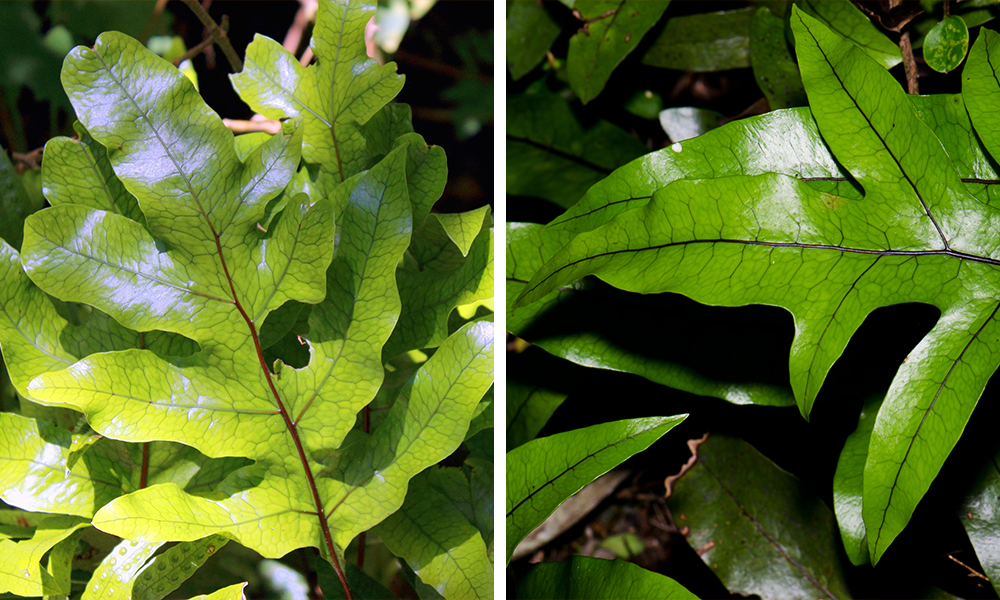Kangaroo ferns are gaining popularity across America, and for good reason! They’re gorgeous, and they’re a lot easier to take care of than some of the other common fern varieties. You can keep these ferns as a houseplant, or you can grow them outdoors in zones 9-11.
True to their “down-under” inspired name, kangaroo ferns are native to Australia and New Zealand, but they grow happily in a variety of places. They can be epiphytic, hanging from other trees and plants, but they’re just as happy growing on the ground. They usually grow to about 1′ tall and 2-3′ wide. They have two different types of leaves that are said to resemble the paws of the kangaroo. The best feature of these ferns, besides their beautiful looks, is that they’re more drought-tolerant than many other ferns.
Kangaroo Fern Care
You can grow kangaroo ferns indoors or outdoors, but they’ll require slightly different care. In or out, they like plenty of humidity and protection from direct sunshine.
Light: Kangaroo ferns need plenty of indirect light indoors. They’ll do best in a bright room protected from direct sun by a sheer curtain. Outdoors, they can handle a little bit of dappled sun, but they’ll do best in a shady area.
Soil: These easy-going plants aren’t too picky; they just need soil with excellent drainage so that they don’t develop root rot.
Pot Type: Kangaroo ferns look great in tall pots or hanging baskets where they can drape over the edges. Drainage holes are essential.
Watering: Water Kangaroo ferns once the top of the soil is dry. Keep the stream of water flowing until the water starts to run out of the drainage holes. Outdoors, water in the early morning or evening before the weather gets hot.
Fertilizer: Ferns can have some balanced fertilizer once a month during the summer, but it’s not essential. Do not fertilize them in the winter.
Humidity: Kangaroo ferns love humidity, as most ferns do. In the house, they’ll benefit from a pebble tray beneath the pot or a nearby humidifier.
Temperature: These ferns like to stay warm in the spring, summer, and fall; around 70-75º. They prefer cooler temperatures around 60-65º in the winter.
Identifying Common Fern Problems
Does your fern look a little sick? Here are some guidelines to identify common problems and bring back your happy, perky plant!
Sparse or slow growth: Not enough light. Move it closer to a window with a sheer curtain, or into a location with dappled shade.
Brown and crispy fronds: Too much direct sun. Add a sheer curtain or move it away from a window or into a shadier location.
Wilted, yellowing leaves, but damp soil: Overwatered. Give it a break and don’t water again until the soil is dry to the touch.
Wilted, browning, and brittle leaves: Underwatered. Give it a good, deep drink. Don’t make a habit of waiting until your fern looks like this before watering, as it stresses the plant out and makes it more susceptible to pests and disease.
Droopy and wilted, but with evenly moist soil: Not enough humidity. Add a humidifier or pebble tray nearby.
These awesome ferns have tons of personality and are fun to have around. If you’ve struggled with ferns in the past, we think the kangaroo fern is worth a try! With a little care they can thrive. It might just bound its way into your heart.


